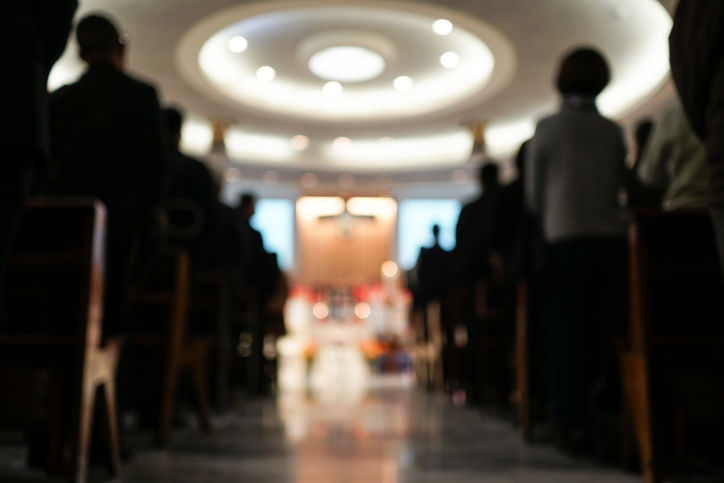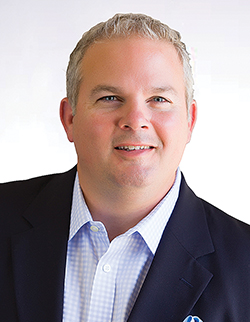
 It’s possible to know how your facilities are doing … without stepping foot on campus
It’s possible to know how your facilities are doing … without stepping foot on campus

Senior Vice President, Service + Building Automation
Harris Corporation
Many church executives won’t be familiar with the term “telemetry.” What is it, and how does it apply to their roles as large-church leaders and managers?
Bob Swanger, MBA, LEED AP: Telemetrysm Powered by Harris, is a proprietary process to help our customers operate, maintain and repair their facility’s infrastructure more efficiently and effectively.
Telemetry is a group of facility services designed to acquire, aggregate and analyze data that’s gathered and stored in facility building automation systems from a variety of sensors, including proprietary HVAC controls, lighting controls, security systems, plumbing systems, and other sensors commonly known as the Internet of Things.
Most data from building systems is stored locally, in systems with limited system data storage capacity, and thus is overwritten on a regular basis. This prevents building owners from being able to monetize the information to optimize their facility operation. We use the data collected to develop insights about our customers’ facilities.
Tell me more about Telemetry Enabled Service AgreementSM. What’s involved in getting it up and running?
Swanger: Telemetry uses a physical device called a “Mini Agent” to collect data from pre-existing sensors throughout a building, or directly from an existing building automation system, and relays that data to a private cloud instance.
Telemetry aggregates data from a wide variety of control systems and presents it via a single common platform. While it only takes a few hours to install the physical Mini Agent onsite, it takes two to three weeks on average to configure the site assets / systems and collect enough data to be able to establish a baseline of operation.
If a complete set of controls / building automation drawings are available, it will make installation more efficient and effective.
Telemetry requires internet access to communicate with the Harris cloud; therefore, we require your in-house or outsourced IT manager to authorize the installation. The only other staff we need involved is someone who knows the facility’s operation and can answer questions remotely if our team needs help during the configuration process.
Is it available to churches anywhere?
Swanger: In theory, yes; however, a part of the value we provide is being able to help the church resolve issues identified by Telemetry. If we’re close enough to work with the facility in person, we’ll get better results. We primarily work with facilities in the general proximity of Washington, DC / Maryland / Virginia / Minnesota / Wisconsin / Iowa / Idaho / Utah / Washington / Las Vegas / Phoenix.
What does this agreement include?

Swanger: The deliverables for the Telemetry Enabled Service Agreement include:
• Labor and material to install and configure Telemetry hardware on the site
• Asset and site verification
• Develop baseline lifecycle cost analysis
• Energy analysis — Energy Star Portfolio Manager or EUI baseline analysis
• Develop initial conditional assessment of existing systems and assets
• Setup and configure the site data acquired from the existing building automation system
• Develop initial facility benchmark
• Provide recommendations for building tune-up
• Provide recommendations for scheduled operations and maintenance deliverables
• Critical alarm configuration and monitoring during Harris’s normal business hours
• Preferred rates on all additional services (PM, repair, etc.)
• 24 / 7 emergency service at preferred rates
• Quarterly reporting
• Capital expenditure planning assistance
Who in the church is likely to benefit most from such an agreement?
Swanger: At the risk of sounding flippant, everyone. Moving to a Telemetry Enabled Service Agreement allows the church to “do more with less,” stretching facility dollars further and allowing for limited resources to be deployed toward the church’s core mission.
Who at the church might oversee, or be the church’s “point person,” for this agreement?
Swanger: Whoever managed day-to-day building operations, plus the business or financial manager
If a problem is detected, what happens next, per the services agreement?
Swanger: If a critical alarm is activated, Harris will respond within the conditions of the Service Level Agreement (SLA).
For regularly scheduled tasks, Harris will perform in accordance with the pertinent Statement of Work for those services.
Harris will review facility performance monthly and provide ongoing recommended actions per our SLA.
On a quarterly basis, Harris will provide a summary report of outstanding items, facility performance against baseline / benchmark, and recommended actions.
Can you give an idea of the potential ROI for a church of implementing an agreement like this?
Swanger: Because of the uniqueness of each facility — age, use, condition, assets, systems and so on — it’s difficult to provide a ROI for the investment in Telemetry.
Harris expects that most facilities switching from traditional PM program to a Telemetry Enabled Service Agreement will see a 30 to 50 percent reduction in labor and materials necessary to maintain the building. However, in most facilities, we uncover system improvements or repairs necessary to return buildings to high operating efficiency, so actual savings aren’t likely to occur until year two.
Several factors will impact the total cost of operations, including whether you outsource maintenance or have your own staff; the existing condition of equipment; levels of deferred maintenance; age of systems; and planned capital projects.
— Reporting by RaeAnn Slaybaugh


